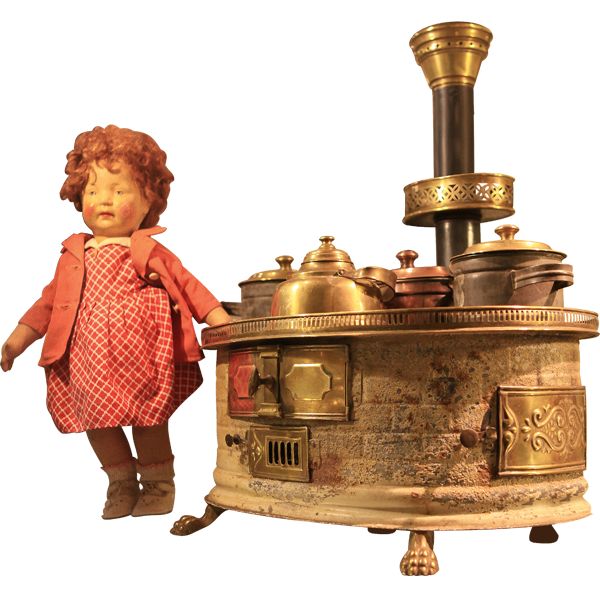
- DE
- EN
- FR


While the boys played with railways and steam engines, the girls were given dolls, stuffed animals and accessories. These so-called "girls' toys" also included children's herds and doll's houses.
Traditionally, the doll's houses were set up at Christmas and stowed away again in the attic on Epiphany.
Just as physical toys served to educate, the doll's play with hearth and parlour was also considered good preparation for the traditional division of roles between men and women at that time. This gender-specific approach was also used in advertisements by Bing. Girls were playfully prepared for their role as housewives. The doll's houses were mostly modelled on the homes of upper middle-class families. They were recreated with great attention to detail.
In addition to complete rooms, there were also individual rooms as doll's houses. These were mostly salons or kitchens. Especially the miniature kitchens were equipped with all the necessary kitchen utensils and a functioning cooker.
Bing was one of the few manufacturers who also made doll's houses and furniture out of sheet metal.
In addition, there were special children's cookers that were fully functional: The girls could actually cook and bake with the appropriate cookware. They were operated with spirit, which sometimes made them quite dangerous to play with. Later, Bing also offered electric heating for the cookers. Cookbooks, cookie cutters, waffle irons and enamel dishes were also available as accessories.